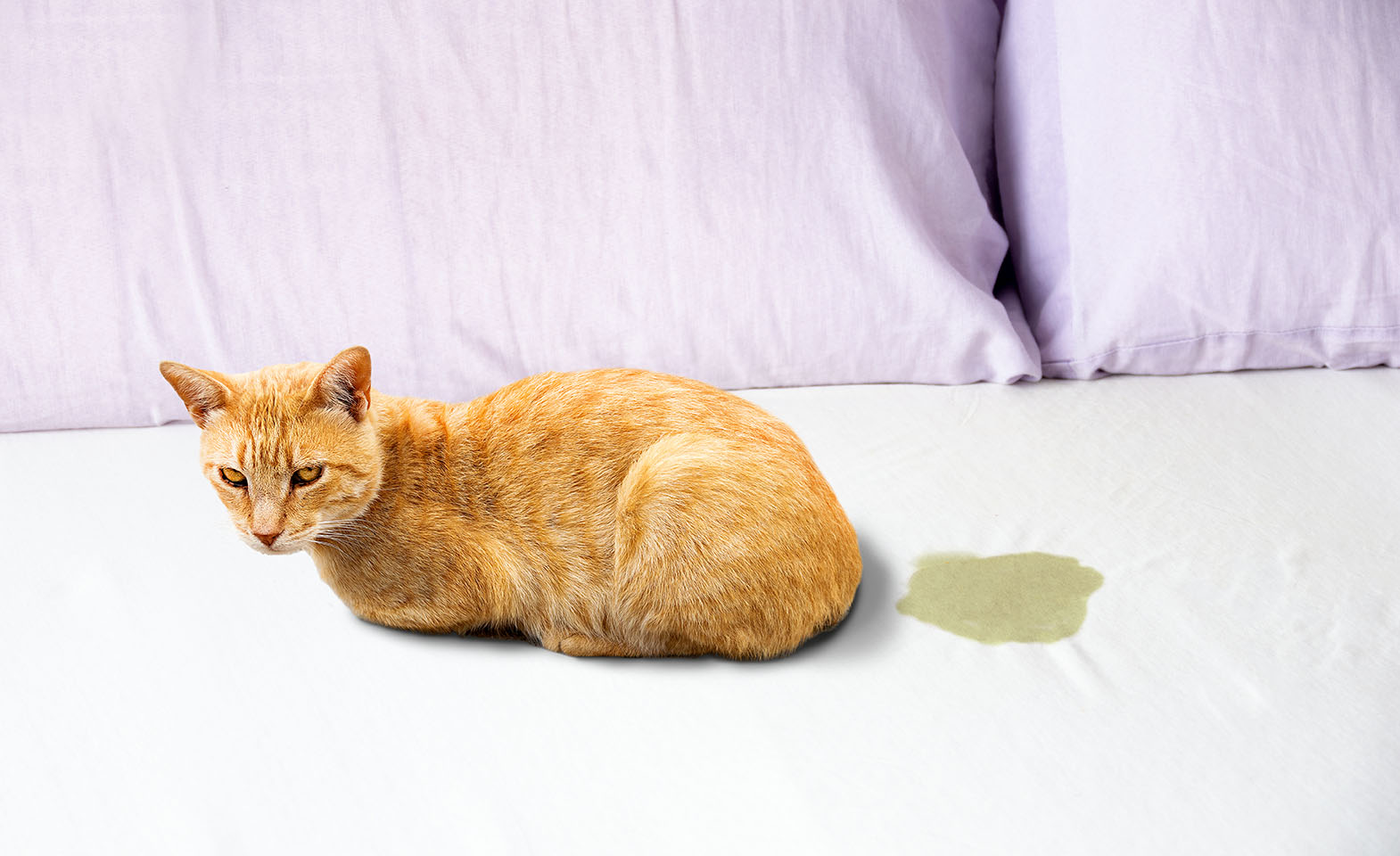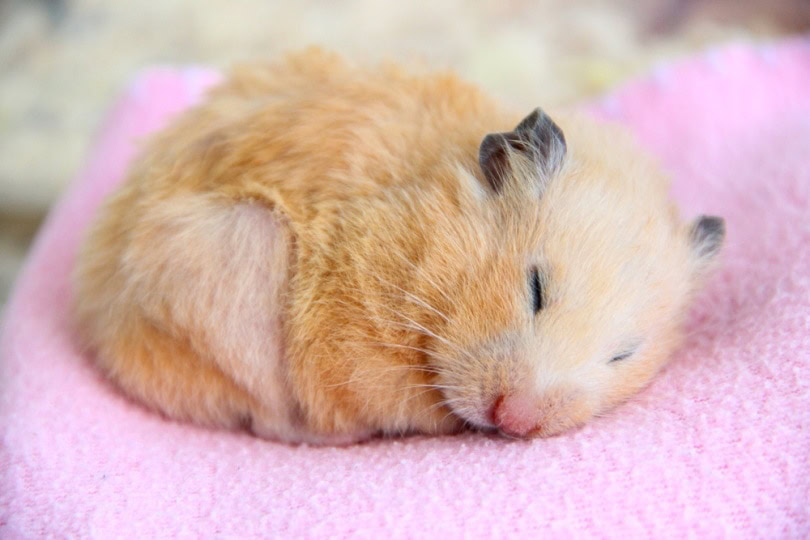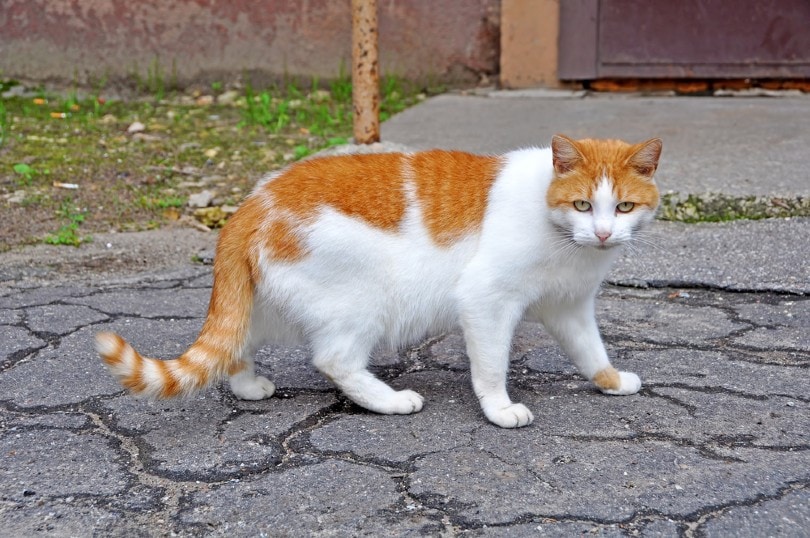VET APPROVED

The information is current and up-to-date in accordance with the latest veterinarian research.
Learn more »Click to Skip Ahead
If you’re a cat owner, you’ve probably had to deal with cat urine, which packs a potent odor, to say the least! If you’ve ever had a cat pee on anything other than kitty litter, you also know how difficult it is to remove that smell. You’ve cleaned the area and sprayed deodorizer, and you can swear that you can still smell it.
How long does that horrific odor last? Should you get your couch steam-cleaned? Should you buy a new carpet? Unfortunately, cat urine smell can linger for a long time if not taken care of correctly.
We’re here to help you deal with that cat urine issue, and, we can help you find the best way to eliminate it. Hopefully, you’ll be able to reclaim whatever it is that smells like cat pee and make it smell like new again — or at least, not like cat pee.

How Long Does Cat Urine Odor Last?
How long can cat pee smell linger when your cat has peed on fabric or some other surface?
Bad news… cat pee smells can linger for practically forever! This is only mostly true if you don’t tackle the stain and odor as soon as possible, though.
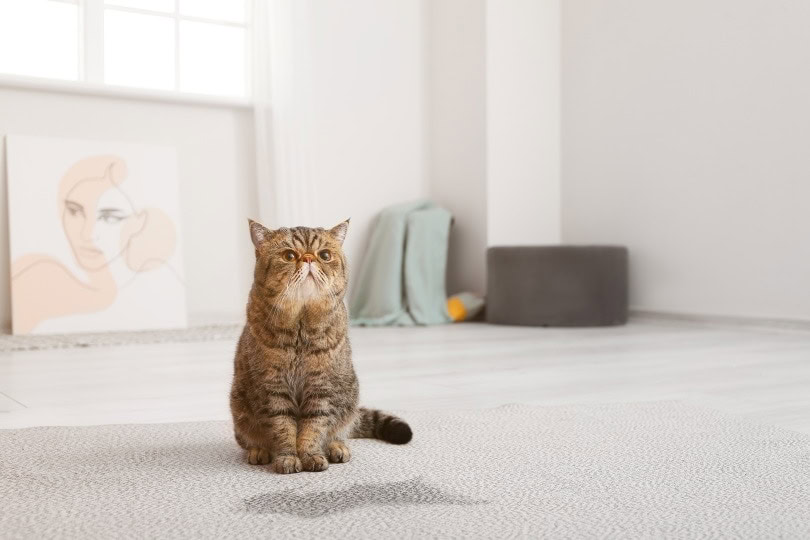
Why Does Cat Urine Stink So Much?
Cat urine contains plenty of ammonia and urea, which is what gives it such a strong and smelly odor.
When cat urine is left alone, the bacteria found in the urine start to break down urea, which then gives off that intense ammonia odor that never seems to go away completely. When the urine breaks down even more, it releases mercaptans, which can also be found in skunk spray.
The stench can be even more pronounced if you have an unneutered male cat, due to the pheromones released for marking territory, the presence of a urinary tract infection, or a senior cat whose kidneys don’t work that effectively.
However, if you use the right cleaners and techniques, you should be able to remove the smell. There is most definitely a right way and a wrong way to clean cat urine, though, so we’ll walk you through the steps.

Tips for Cleaning Up Cat Urine
You need to do a few things to tackle cat urine stains and smells, and these steps also depend on how old the stain is.
1. Blot the cat pee stain
If the urine is still wet, you need to start by blotting. This step is super important, and it’s also essential that you don’t rub or scrub the stain because you’ll just push the urine further into the surface.
Use a clean and dry rag or paper towel, and gently press it on the stain so it will soak into the towel and not your furniture.
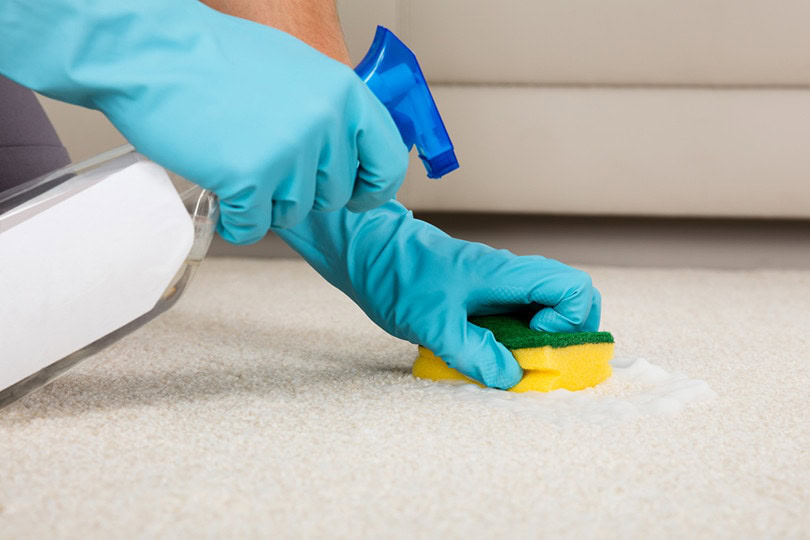
2. Cover the stain
Once you’ve soaked up the excess urine, use a new clean rag or paper towel and put it on top of the stain. Just leave it there for a bit so it can remove most of the excess pee.
Time to Clean
Once the urine seems to be mostly absorbed, it’s time to clean it. There are a few different methods that you can use, all of which we’ll cover.
3. Use Enzymatic Cleaners
Our favorite enzyme cleaner is the Hepper Advanced Bio-Enzyme Pet Stain & Odor Eliminator Spray because it permanently removes even the very worst pet stains and smells you can imagine (and makes clean-up a breeze). They even offer a 100% satisfaction guarantee! Click here to order a bottle and freshen up your home today.
- ADVANCED ENZYMATIC CLEANER - Penetrates the most stubborn smells and stains at the deepest molecular...
- FOR ANY MESS, ON ANY SURFACE - This pet odor eliminator cleans your carpets, floors, furniture,...
- FRESH, NATURAL ODOR - Our unique formulation doesn't rely on dangerous or unpleasant chemical...
At PangoVet, we’ve admired Hepper for many years, and decided to take a controlling ownership interest so that we could benefit from the outstanding products of this cool cat company!
Enzymatic cleaners can break down the uric acid in the urine, which is the main instigator of the stink factor. You typically spray it onto the stain and let it sit for about 15 minutes or so. Just ensure that you follow the instructions of whatever kind of cleaner that you buy.
You’ll need a clean cloth or paper towel to place over the stain. Let it sit until it’s completely dry, even if it takes a few days. If you can still smell urine, just clean it again following the same procedure.
The beauty of enzymatic cleaners is that they are literally made to remove cat urine odor.
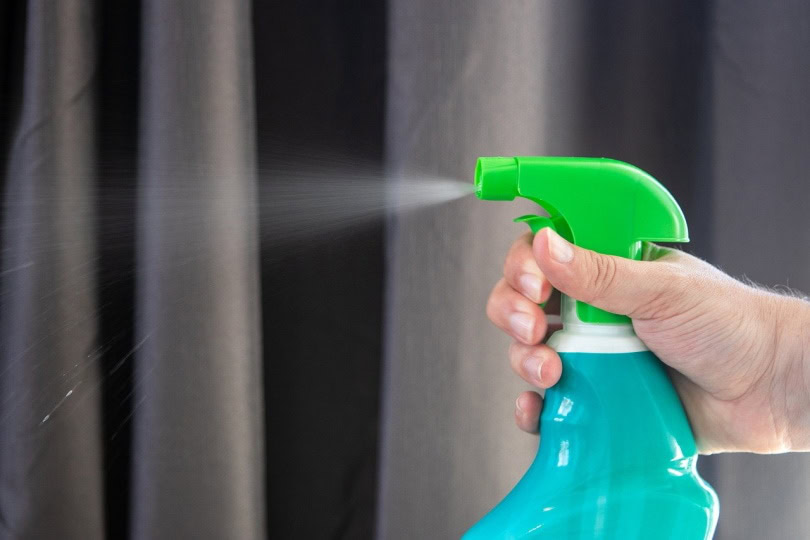
4. Avoid Using Vinegar, Hydrogen Peroxide, Dish Detergent, or Baking Soda
Since most people have these ingredients already in the house, it may sound like a great way to quickly remove urine odor and stains. However, these products will not chemically break down the molecules responsible for the odor, meaning the smell will return, usually when in contact with water molecules. Initially, it may seem like the products have done the job, but not for long. Also, mixing these products with enzymatic cleaners may reduce the effectiveness of the enzymatic cleaners altogether.
5. Absorbing the Cat Pee Smell
If you’ve removed the stain and most of the odor but can still smell a trace amount, you can try this tip. Fill a bowl with activated charcoal or coffee grounds and leave it near the odorous area. Leave it there overnight, and the smell should hopefully be absorbed.
Why Did My Cat Pee Outside The Litter Box?
Once you’ve dealt with the odor, you should look at why your cat urinated outside of the litter box in the first place. There are several reasons that this can occur:
- Medical Issues: Certain health problems can lead to an increase in urination, such as liver disease, kidney disease, and diabetes. Other conditions can make urinating painful. Medical issues such as urinary tract infections and bladder stones can lead to urination in inappropriate places, while older arthritic cats might start to associate pain with their own litter boxes.
- Anxiety: A certain level of anxiety and stress can lead to a cat urinating inappropriately. Having a new pet or person move into the home or a recent move to a new home can all be factors. Behavioral problems tend to crop up when a cat feels stressed because they prefer a stable and routine environment.
- The Litter Box: The litter or the box itself could be the problem. If the box is too small or in an area with excessive noise and activity, some cats might start avoiding it. The litter should also be cleaned often, and you should get unscented and medium to fine litter.
In many cases, especially if your cat is suffering from a known health condition or is showing signs of drinking and peeing more, struggling to urinate, straining, or passing blood in urine, you should speak to your vet about the problem immediately. You can also consider an animal behaviorist if it’s a behavioral issue.

A Few Warnings
There are a couple of things that you should be aware of before you tackle pee stains and odor.
Test a Spot
Before using anything to clean the stain, try it out on a small unseen area. Some cleaners might cause discoloration or damage, so it’s safest to test it out first.
Bleach and Ammonia
Since cat urine can smell strongly of ammonia, if you use any product to clean the cat urine stain that is ammonia-based, chances are that your cat will continue to urinate in the same spot. This is why enzymatic cleaners are best, as they break down the ammonia scent so your cat won’t be drawn to the same area.

Conclusion
We hope that our tips have helped you quickly remove urine stains, particularly the odor. If nothing seems to work, you might want to consider having a professional clean the item.
Be persistent and patient when cleaning, and make a point of trying to figure out why your cat peed outside of the litter box. You certainly don’t want to spend all that time and effort cleaning it up only to have your cat do it again. Also, of course, you want your cat to be happy and in good health.
Featured Image Credit: cunaplus, Shutterstock
